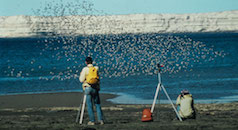By Jennifer Hushaw, Applied Forest Scientist, Climate Services Program
Do you ever find yourself bracing for a massive storm or listening to reports of record-breaking extreme weather on the news and wondering whether it has anything to do with climate change? A decade or so ago, many thought it was essentially impossible to answer that question with any degree of certainty, but an emerging field of climate research known as event attribution has recently opened the door to investigating these questions. In the last five years, there have been rapid advances that, in many cases, allow scientists to go beyond the often repeated line that “no individual weather event can be attributed to climate change,” and instead provide quantitative estimates of how much the likelihood, frequency, or magnitude was influenced by anthropogenic warming. Attribution assessments can now be made within weeks of an event (through cooperative efforts like the World Weather Attribution project, for example), rather than many months.

Record-breaking extreme events, 2012-2015.
Source: Otto 2016
This research gives us important new information because the way we perceive and frame the causes of an event influences how we respond to it, including what post-disaster actions, preventive practices, or adaptation and mitigation initiatives we put in place. This is true in forest management as well, and the most recent bulletin from Manomet’s Climate Smart Land Network outlines how insights from attribution research can help inform forest management decisions and long-term planning. Take, for example, the following scenarios:
- A major storm event causes numerous blow downs in forest stands. A subsequent study suggests that a storm of that magnitude was twice as likely because of climate change. With the expectation that these types of storm events may become more frequent, a manager diverts resources toward pro-active measures that develop increased wind-firmness in intact and newly established forest stands, rather than focusing solely on salvage efforts.
- A severe winter storm leads to extensive ice damage in forest stands, but subsequent research indicates the storm was largely the result of natural climate forces and, while rare, icing events of similar magnitude were experienced in the past. A forest manager might undertake any necessary salvage, but otherwise refrain from changing management because evidence suggests the storm was an infrequent, but not unusual weather event.
- Culverts on a forest road, which were sized following the typical standard, wash out during an unusually heavy downpour. Analysis shows the rain event was more intense as a result of warming trends. When replacing the culverts, managers upsize in anticipation of larger peak flows in the future.
Check out the recent CSLN bulletin for details about the factors spurring advancement in this area of research, the range of reliability in results depending on the type of extreme event, and recent examples of attribution studies in the U.S. and abroad.





 Back to all
Back to all